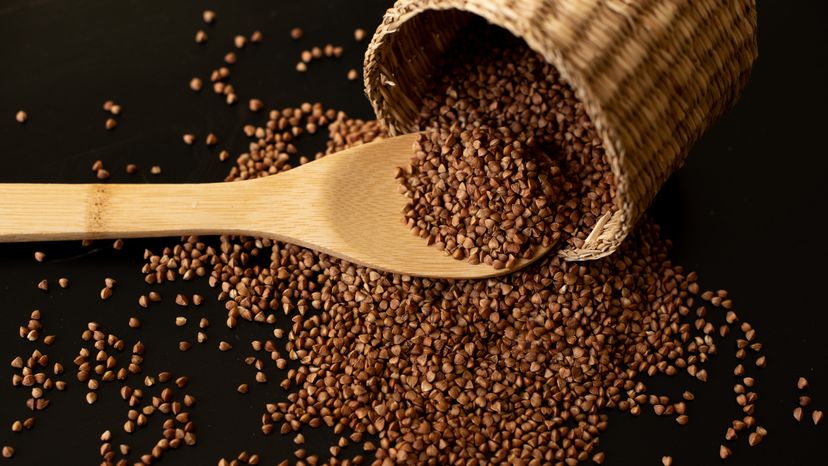
There's more to buckwheat than flapjacks. Eastern Europeans know roasted buckwheat groats as kasha and eat it like porridge. Despite its name, buckwheat is not a type of wheat -- nor is it related to wheat. Buckwheat isn't even a grain; it's the fruit of a plant that's related to rhubarb.
Buckwheat is a fruit any dieter should become familiar with. Diets that contain buckwheat have been linked to lowered risk of developing high blood pressure.
Advertisement
Buckwheat's beneficial effects are due in part to its rich supply of phytochemicals. Phytochemicals protect against disease by acting as antioxidants. Eating foods high in fiber, such as buckwheat, can also fill you up faster and suppress your appetite, a great tool for weight loss.
Health Benefits
Buckwheat contains more protein than grains and is not deficient in the amino acid lysine as most grains are, so the protein is more nutritionally complete. That makes it a particularly good choice for vegetarians. It's an excellent source of magnesium, a boon to your blood pressure. A phytochemical in buckwheat may be beneficial in the management of diabetes; studies show it may have the ability to lower blood glucose levels. It's also a good source of fiber.
Selection and Storage
You can find buckwheat in the natural foods section of supermarkets. It's more expensive than other grains because its triangular shape requires special milling equipment.
Buckwheat is sold as groats, grits, or flour. Groats are pale kernels without the hard, inedible outer shell. You can buy them whole or cracked into coarse, medium, or fine grinds. Roasted groats -- kasha -- are dark kernels. Very finely cracked unroasted groats are buckwheat grits. They can be found as a hot cereal -- sometimes labeled "cream of buckwheat." Buckwheat flour is also available, in light and dark versions. The darker type contains more of the hull, therefore more fiber and nutrients, and imparts a stronger flavor. Keep buckwheat in a well-sealed container in a cool, dark location. At room temperature, it is more susceptible to turning rancid than are true grains, especially in warm climates. Keep it in the refrigerator or freezer.
Advertisement